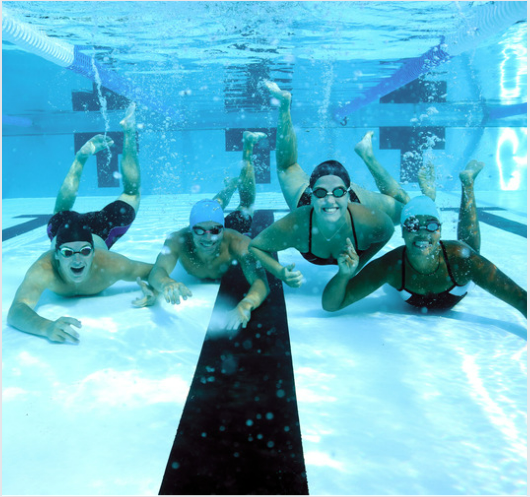Competitive Swimming Pool Trivia

Swim Goggles
|
January 13, 2014
Surprise! Swimming is interesting!
 On New Year's Eve, I found myself discussing new year's resolutions with a group of friends at a party.
I told them that one of my goals was to get to the pool more regularly (note: this is an extremely obtainable goal, now that my 5 & 8 year old have evening swim practice). Non-swimmers at the party started asking unusual questions about swimming that I happily answered.
Then it dawned on me: their questions weren't unusual at all! I took a step backward (mentally - so to speak) and concluded that the sport of swimming is as interesting as it is challenging!
With that in mind, I've compiled a short list of swimming trivia questions and facts to interest and amuse swimmers of all ages.
On New Year's Eve, I found myself discussing new year's resolutions with a group of friends at a party.
I told them that one of my goals was to get to the pool more regularly (note: this is an extremely obtainable goal, now that my 5 & 8 year old have evening swim practice). Non-swimmers at the party started asking unusual questions about swimming that I happily answered.
Then it dawned on me: their questions weren't unusual at all! I took a step backward (mentally - so to speak) and concluded that the sport of swimming is as interesting as it is challenging!
With that in mind, I've compiled a short list of swimming trivia questions and facts to interest and amuse swimmers of all ages.
How long is an Olympic Swimming Pool?
Many swimmers have undoubtedly had to bite their tongues when the general public bats around the term "Olympic Swimming Pool."- Question: How often does the new apartment complex or hotel really contain an "Olympic Swimming Pool"?
- Answer: Never!
- Question: True or False, Olympic pools are exactly 50 meters long.
- Answer: False! Technically a pool must allow a full 50 meters of water between touchpads to satisfy international competitive standards mandated by FINA (and USA Swimming), the international governing body of swimming. However, Olympic pools are typically oversized, to allow timing touchpads to be placed over the pool wall, without shortening the pool to a length below the required 50 meter distance*.
* FINA allows a distance tolerance of plus .03 meters, but you can't go shorter than 50 meters!
How cold (warm) is a Competitive Swimming Pool?
- Question: What pool water temperature is required for competition (FINA / USA Swimming)?
- Answer: 75º F - 82.4º F (that's converted from 25° C - 28° C).
When were swim goggles first used in the Olympics?
This fact really caught me off guard. I knew my grandfather Adolph Kiefer didn't wear goggles. But then I remembered pictures of Mark Spitz blasting through the water mustache first in the 1972 Olympics - still no goggles!- Answer: Swim goggles weren't used in the Olympics until 1976 in Montreal.
- Bonus Fact: Swim goggles were first used in international competition by David Wilkie in the 1970 Commonwealth Games.
What is the Fastest Swim Stroke?
- Question: What is the fastest swim stroke?
- Answer: Freestyle
- Freestyle
- Butterfly
- Backstroke
- Breaststroke
Do Swimmers Sweat When They Swim?
- Question: Do swimmers sweat?
- Answer: Yes!







Leave a Comment
Your email address will not be published. Required fields are marked *